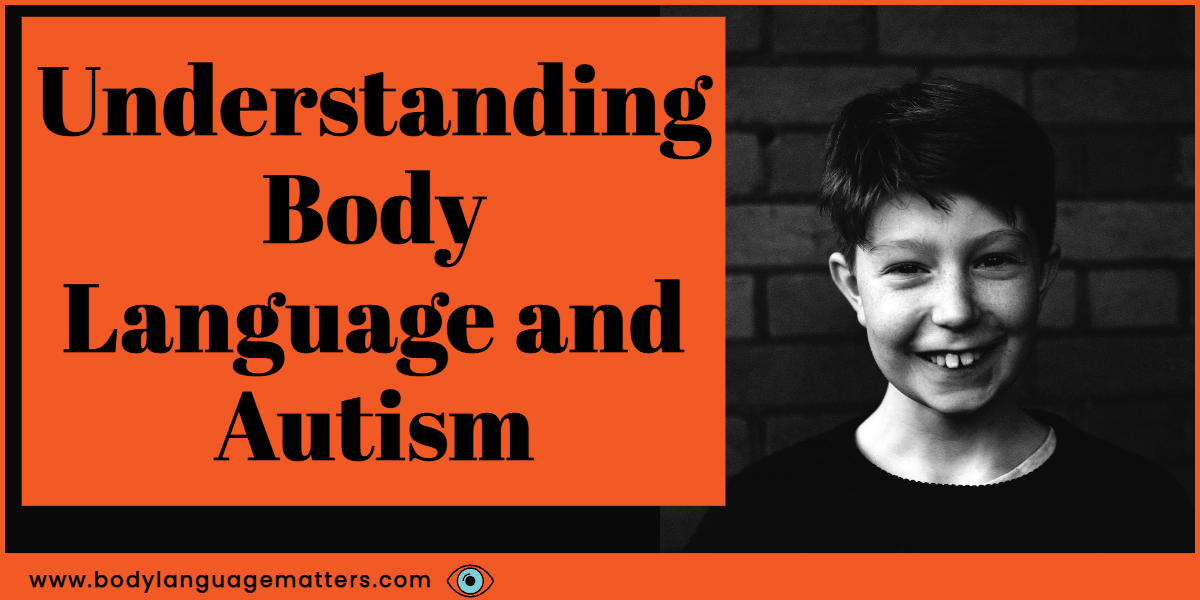In this article, we explore the unique challenges and characteristics of body language in people with Asperger’s, a form of high-functioning autism.
By understanding the differences in non-verbal communication and social skills, we can better support individuals on the autism spectrum, fostering more effective communication and stronger relationships.
We will delve into aspects such as eye contact, gestures, tone of voice, stimming, and pupil dilation, all of which play a crucial role in understanding the body language of people with Asperger’s.
The Connection Between Body Language and Autism Spectrum ?
Body language is an essential part of human communication, but for individuals with autism or Asperger’s, interpreting and expressing non-verbal cues can be a significant challenge.
Autism spectrum disorder (ASD) is a neurodevelopmental disorder that affects communication, social skills, and behavior.
People with Asperger’s, a form of high-functioning autism, often struggle to perceive and respond to the body language of others.
Body Language in Adults on the Autism Spectrum. ?
Adults with autism may exhibit unique body language patterns compared to neurotypical individuals. Some common differences include difficulty making eye contact, unusual gestures, and problems understanding facial expressions or tone of voice. It is essential to recognize these differences when interacting with people on the autism spectrum to avoid misunderstandings and foster better communication.
Learning to Read Body Language in People with Asperger’s ??
Non-Verbal Communication Challenges
Individuals with Asperger’s may have difficulty interpreting non-verbal communication, such as facial expressions, gestures, and body posture. This challenge can make it hard for them to navigate social situations and build rapport with others. However, with practice and support, people with Asperger’s can learn to read body language more effectively.
Eye Contact and Gaze
Eye contact is a crucial aspect of body language, but people with Asperger’s often struggle with maintaining or interpreting it. They may look away or seem unfriendly due to their difficulty making eye contact. However, it is essential to remember that this behavior is not indicative of their interest or engagement in the conversation.
Gestures and Posture
People with Asperger’s may exhibit different gestures or body postures than neurotypical individuals. For instance, they might hold their body in a more rigid position or have difficulty interpreting the meaning of specific gestures. By understanding these differences, we can better communicate with people with Asperger’s and help them develop their non-verbal communication skills.
Social Skills Development in Autism and Asperger’s ??
Building Rapport
Building rapport with people with autism or Asperger’s may require extra patience and understanding due to their unique body language and communication style. By focusing on verbal communication and being aware of their non-verbal cues, we can create a comfortable environment for them to express themselves and develop meaningful connections.
Understanding Tone of Voice
People with Asperger’s might have difficulty interpreting the tone of voice in others, which can lead to miscommunication or misunderstandings. They may also speak in a monotone voice, making it hard for others to gauge their emotions or intent. By being mindful of this challenge, we can adjust our tone when communicating with them and encourage them to express their feelings more clearly.
Interpreting Facial Expressions
Interpreting facial expressions can be another challenge for individuals with Asperger’s. They may not recognize the meaning behind specific expressions, such as a smile or a frown, which can make social interactions more complex. Teaching people with Asperger’s to identify and interpret facial expressions can be an essential step in improving their social skills.
Stimming and Body Language in Autism
The Purpose of Stimming
Stimming, or self-stimulatory behavior, is common in people with autism. It can manifest as repetitive movements or sounds, such as hand flapping, rocking, or humming. Stimming helps individuals with autism self-regulate, cope with sensory issues, or express emotions. While stimming may seem unusual to neurotypical individuals, it is essential to understand its purpose and significance in the autism community.
Common Stimming Behaviors
Some common stimming behaviors in people with autism include:
- Hand flapping
- Rocking
- Finger tapping
- Spinning objects
- Repeating phrases or sounds
Recognizing these behaviors as stimming can help us better understand and support people with autism in social situations.
Pupil Dilation and Autism
What Pupil Dilation Can Indicate.
Research has shown that pupil dilation can be an indicator of emotional and cognitive processing in people with autism. Changes in pupil size can signal increased mental effort, emotional arousal, or even discomfort due to sensory issues, such as bright lights or loud noises.
How to Interpret Pupil Dilation in People with Autism.
To interpret pupil dilation in people with autism, it is essential to consider the context and possible triggers for the change in pupil size. By understanding the potential reasons behind pupil dilation, we can better support individuals with autism in managing their emotions and sensory experiences.
Frequently Ask Questions!
Why do people with Asperger’s struggle with body language?
People with Asperger’s often have difficulty interpreting and expressing non-verbal cues due to differences in their neurological functioning. This challenge can make it hard for them to navigate social situations and understand the intentions of others.
What are some common body language differences in people with autism?
Some common body language differences in people with autism include difficulty making eye contact, unusual gestures, and problems understanding facial expressions or tone of voice.
Can people with Asperger’s learn to read body language?
Yes, with practice and support, people with Asperger’s can learn to read body language more effectively. This skill development can help them improve their social skills and communication with others.
Final Thoughts
Understanding the body language of people with Asperger’s is crucial for fostering better communication and relationships with individuals on the autism spectrum.
By recognizing the unique challenges they face in interpreting and expressing non-verbal cues, we can support their social skill development and help them navigate social situations more effectively.

